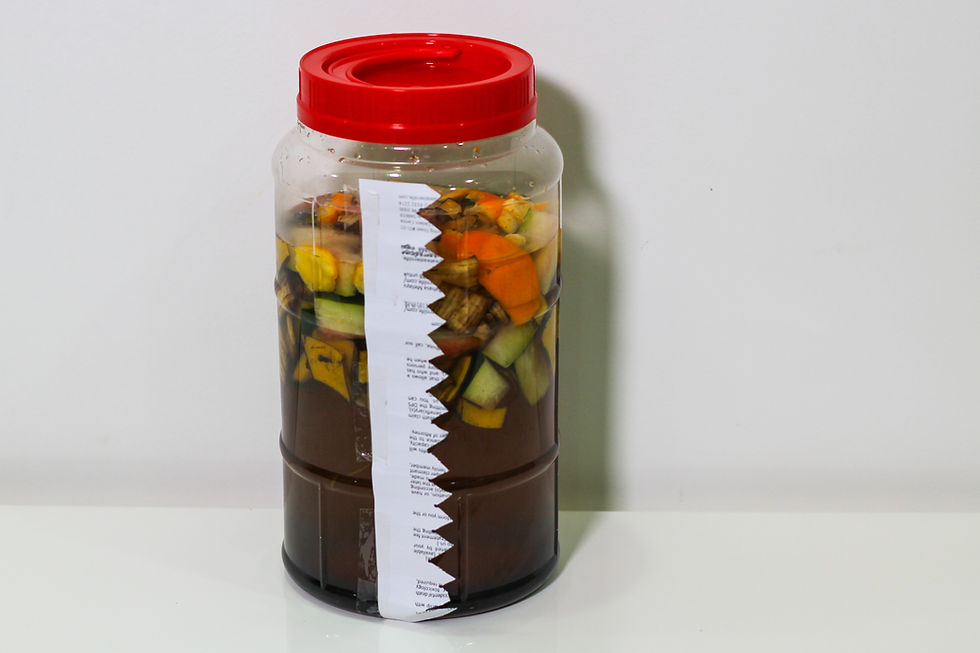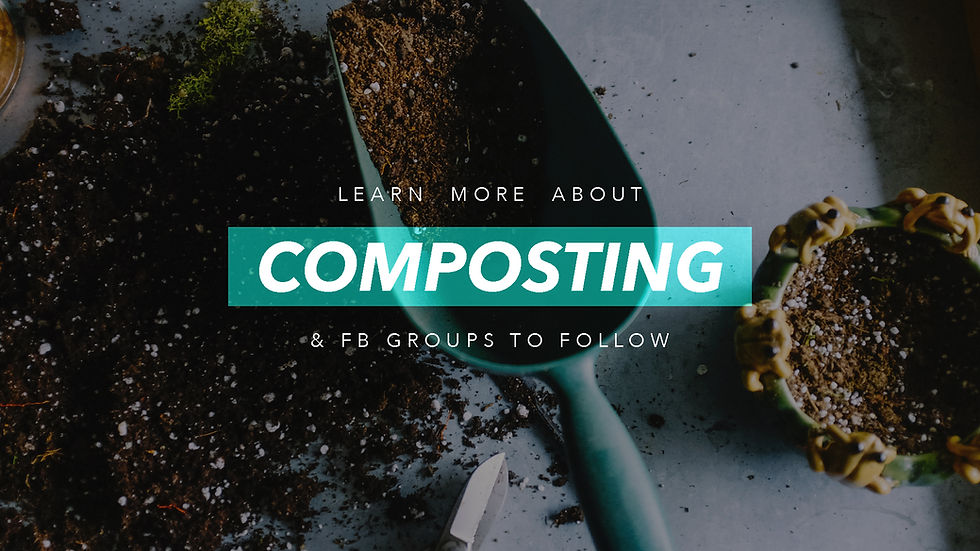Making Eco-Enzyme
- Up & Away
- Feb 12, 2018
- 3 min read
Here's how you can make your very own cleaning detergent, without all the chemicals. Upcycle your fruit scraps and save money!

The creator of this eco-enzyme is actually Dr Rosukon Poompanvong, a Thai professor and doctor. To make this eco-enzyme, you will need:
1. 3 parts fruit scraps (peels, core as well as residue from juicing)
It is important to have a mixture of fruit scraps instead of just 1 type of fruit scraps as it will make a more effective detergent. Also, avoid adding fruit peels that are hard such as logan, rambutan, durian and large seeds such as mango. This is because they will take a longer time to break down.
2. 10 parts Water
Try to use recycled water! For example, you can collect rain water or use the water you wash your rice in.
3. 1 part Sugar
Any economical sugar can be used for your eco-enzyme, but sugar that is less processed e.g. jaggery or gula melaka is better for fermentation.

Gula Melaka, a type of Palm Sugar.
Photo Credits: http://anymap.co/maps/desserts-with-gula-melaka/2934

Jaggery, a traditional non-centrifugal cane sugar.
Photo Credits: http://sathyaminimart.com/124-jaggery
4. Plastic Container
The plastic container that you use will determine the method that you will use to make the eco-enzyme. If you use a dark coloured plastic container, you have to make the eco-enzyme by the weighting scale method. If you use a transparent container, you can use the paper origami method. Also, try to use a container with a larger mouth so that an explosion will not occur.
If you only have a container with small mouth (such as Meiji milk bottles or 1.5L bottles), it is important that you do not cover the mouth with the lid. Instead, you can cover the bottle mouth with coffee paper, a balloon or mesh fabric. This will ensure that the air that is built up during fermentation has a way to escape.
There are 2 different methods to get make the eco-enzyme -
(1) By paper origami.
Start by comparing the length of the paper to the plastic container. Cut the paper so that the length of it is slightly smaller than the length of the container. Next, fold the paper 4 times to achieve 16 sections on the paper. Cut the paper to get an arrow-like shape on one side and paste this origami on the plastic container. Use a permanent marker to draw out the 16 different lines on the bottle. Fill up the water till it reaches 10 parts, then the sugar till it reaches 1 part and then fruit scraps until it reaches 3 parts. If you do not have a lot of fruit peels at one go, you can continuously add fruit scraps until it reaches the 3 parts section. Mark on the container the date that you complete the eco-enzyme, this will be the day that the fruit scraps reach the 3 parts section. You can watch the how-to video here.
(2) By weighting scale.
Depending on the size of your container, you should weigh out the 3 ingredients such that the ratio is 10 parts water:1 part sugar:3 parts fruit scraps. For example, if your container is 1.5L, you can have 1L of water: 100g of sugar:300g fruit scraps. If you do not have a lot of fruit peels at one go, you can continuously add fruit scraps until it reaches 300g. Mark on the container the date that you complete the eco-enzyme, this will be the day that the fruit scraps reaches 300g.
Wait 3 months and your eco-enzyme is ready to be used!
Be sure to stir your eco-enzyme daily for the first month to prevent black mould from forming. During the second and third month, be sure to stir it weekly.






Comments